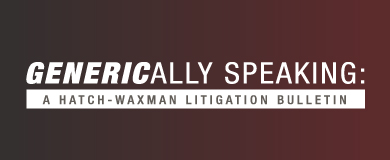- Acumen Powered by Robins Kaplan LLP®
- Affirmative Recovery
- American Indian Law and Policy
- Antitrust and Trade Regulation
- Appellate Advocacy and Guidance
- Business Litigation
- Civil Rights and Police Misconduct
- Class Action Litigation
- Commercial/Project Finance and Real Estate
- Corporate Governance and Special Situations
- Corporate Restructuring and Bankruptcy
- Domestic and International Arbitration
- Health Care Litigation
- Insurance and Catastrophic Loss
- Intellectual Property and Technology Litigation
- Mass Tort Attorneys
- Medical Malpractice Attorneys
- Personal Injury Attorneys
- Telecommunications Litigation and Arbitration
- Wealth Planning, Administration, and Disputes
Acumen Powered by Robins Kaplan LLP®
Ediscovery, Applied Science and Economics, and Litigation Support Solutions
-
June 1, 2022Chambers USA Recognizes Five Robins Kaplan Practice Groups And 17 Lawyers In 2022 Guide
-
June 1, 2022Seasoned Attorney Joins Firm’s Business Litigation Group
-
May 26, 2022Shira Shapiro Named Woman of Promise By The Pearl Society
-
June 3, 202219th Annual Advanced Insurance Law
-
June 9, 2022Building Your Brand: Perspectives and Insights from a Diverse Bar
-
June 10, 2022LGBTQ Legal Services: Transgender Name Change Clinic
-
May 24, 2022Briefly: Seeking Fees and Costs While on Appeal
-
May 19, 202211th Circ. Ban On Service Awards May Inhibit Class Actions
-
May 13, 2022Trademark Applications and the Murky Waters of Subject Matter Jurisdiction
-
June 2, 2022Sandberg Stepping Down as Meta COO After 14 Years
-
June 1, 2022Markets Revert to Recent Form as Pessimism Takes Hold
-
May 27, 2022Unexpectedly Strong Retail Sales Pull Markets Back from the Brink
Find additional firm contact information for press inquiries.
Find resources to help navigate legal and business complexities.
Akamai Technologies, Inc. v. Limelight Networks, Inc.
Induced infringement may be found when all of the claimed steps are performed, regardless of the number of entities needed to perform them.
October 16, 2012

Case Name: Akamai Technologies, Inc. v. Limelight Networks, Inc., Case No. 2009-1372, -1380, -1416, -1417, 2010-1291, 2012 U.S. App. LEXIS 18532 (Fed. Cir. Aug. 31, 2012) (En banc review; Opinion per curiam; Dissenting opinion by Judge Newman and Judge Linn, in which Judges Dyk, Prost, O’Malley join.)
Drug Product and Patent(s)-in-Suit:N/A
Nature of the Case and Issue(s) Presented: The issue before the Federal Circuit was whether a defendant may be held liable for induced infringement if the defendant has performed some of the steps of a claimed method and has induced other parties to commit the remaining steps, or if the defendant has induced other parties to collectively perform all the steps of the claimed method, but no single party has performed all of the steps itself. The Federal Circuit held that induced infringement could be found when all of the claimed steps are performed, regardless of the number of entities needed to perform them. In other words, the Federal Circuit held that there is no “single entity” requirement for induced infringement.
Why Akamai Prevailed: The court started its analysis by reaffirming the principle that induced infringement requires proof of direct infringement. But this requirement of direct-infringement proof is not the same as requiring that a single party be the direct infringer.
The court then stated there is no reason to differentiate the situation where a party induces a single entity to infringe the patent from when a party induces multiple parties to infringe the patent. The Federal Circuit looked to the legislative history of the statute to confirm that Congress did not intend induced infringement to be limited to a single actor. Indeed, induced infringement was intended to be broader than contributory infringement by capturing those who aid and abet infringement. The court also found support for its holding in looking at other situations where one was liable for a tort or crime even though multiple parties were needed to commit the tort or crime. Lastly, the court relied on the First Restatement of Torts for the proposition that imposing tort liability occurs even when the induced party is unaware that his act is tortious.
In response to Judge Linn’s dissent, the Court found that § 271(b) was broader than § 271(a) because it used the term “infringement” rather than listing acts that are “infringing.” The Court examined other sections to assert that when Congress used the term “infringement,” it meant something broader than “infringing.” Likewise, the cases cited in the dissent were not controlling nor did they address the issue presented in this case. The court distinguished the authority as relating to the idea that there needed to be direct infringement before there was induced infringement, a point that was not in dispute.
Related Professionals
Related Publications
Related News
If you are interested in having us represent you, you should call us so we can determine whether the matter is one for which we are willing or able to accept professional responsibility. We will not make this determination by e-mail communication. The telephone numbers and addresses for our offices are listed on this page. We reserve the right to decline any representation. We may be required to decline representation if it would create a conflict of interest with our other clients.
By accepting these terms, you are confirming that you have read and understood this important notice.
